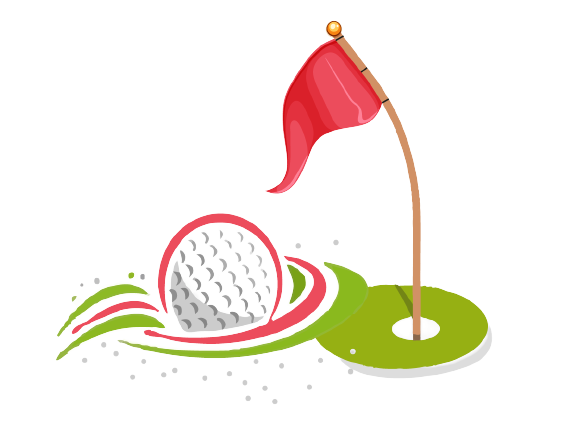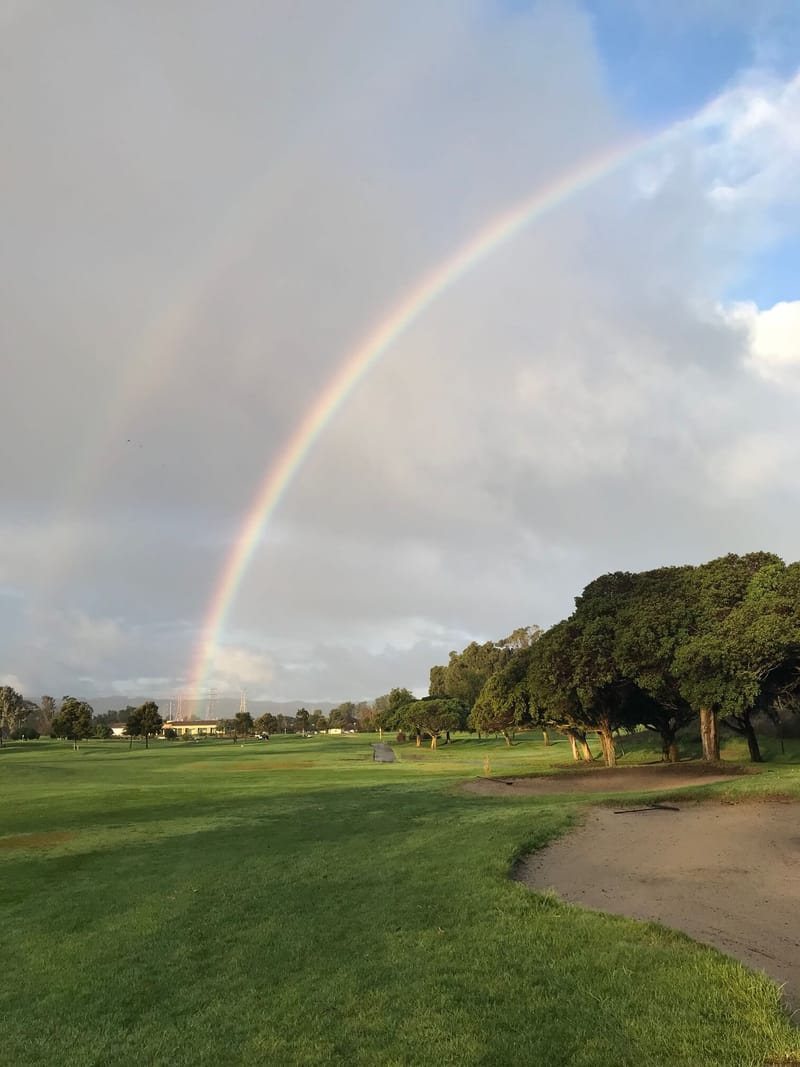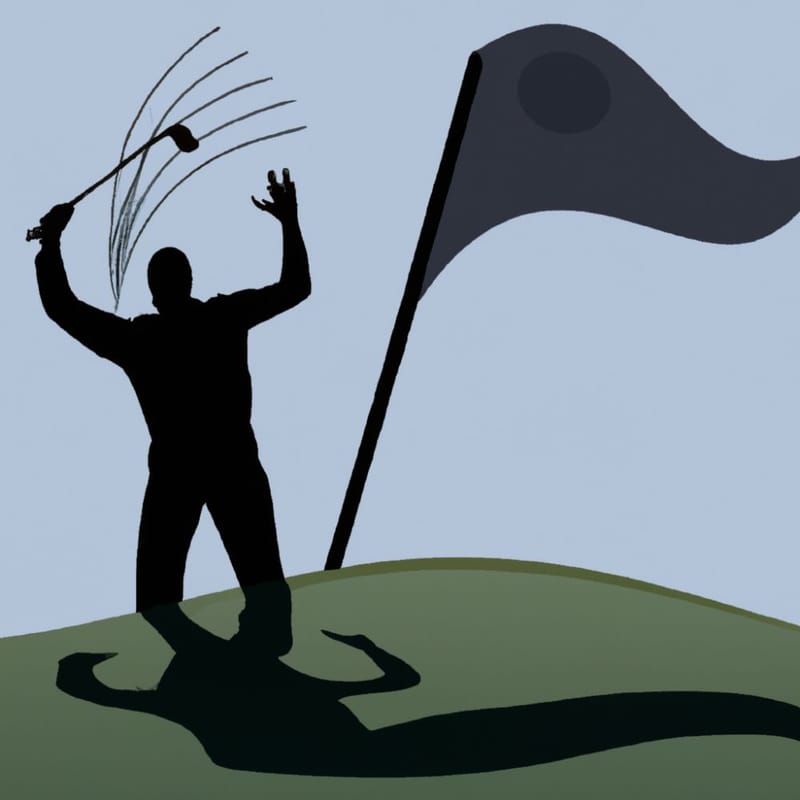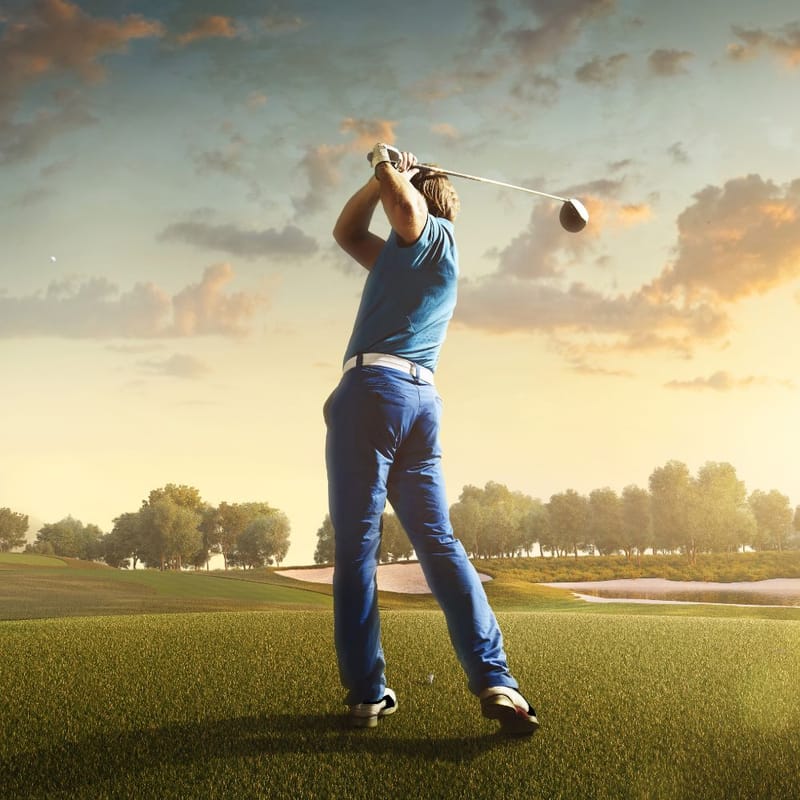Content Summary
Golf is a sport that many people enjoy, but it can be difficult to understand if you don't know the basics. We wanted to take a moment to help those still a bit confused by the game to understand it more.
This will help to explain some of the key concepts of golf, so that you can follow along next time you're watching a tournament on TV or maybe if you have been thinking about taking up the game.
Introduction to golf – what is golf and how can it be played?
Golf is a sport in which players use specially designed clubs to hit balls along a course into a series of holes on a course. The object of the game is to complete the course with the fewest number of strokes.
Golf can be played either individually or in teams. In individual play, each player competes against all other players in the field. In team play, players are divided into pairs or groups, and each team competes against other teams in the field.
Golf is typically played outdoors, but there are also indoor golf facilities where players can practice and play year-round. Golf courses vary in length and difficulty, so players of all skill levels can enjoy the game.
Whether you’re just getting started in golf or you’re looking to improve your game, there are a few key concepts you need to understand. In this section, we’ll introduce you to the basics of golf and explain how the game is played.
The basics of golf – how to grip the club, how to swing, and how to hit the ball
Learning how to grip the club, how to swing, and how to hit the ball are the three basics of golf. If you can master these basics, you'll be well on your way to enjoying this great game or at least understand what you are watching on TV or at a golf tournament.
Gripping the Club
There are three ways to grip the golf club: the overlapping grip, the interlocking grip and the baseball grip. The overlapping grip is when the pinkie finger of your right hand overlaps the space between your index and middle fingers on your left hand.
The interlocking grip is when you flex your pinkie finger and tuck it between your index and middle fingers on your left hand. The baseball grip is when you grip the club like you would a baseball, one hand over the other. Experiment with all three grips to see which one feels more comfortable for you.
Swinging the Club
Once you've got a good grip on the club, it's time to start swinging. The key here is to keep your arms straight and your wrists firm as you take the club back and then swing through to hit the ball. It may help to practice swinging without a ball at first, just to get a feel for the motion.
Hitting the Ball
Finally, it's time to put everything together and hit some balls! Line up your shot, take a deep breath, and then swing smoothly through the ball. Again, it helps to practice without a ball at first so that you can get a feel for the motion before you have to worry about hitting anything.
The different types of golf clubs – what are they and what are they used for?
There are three main types of golf clubs including woods, irons, and putters. Woods are long-distance clubs, while irons are used for mid-range shots, and putters are designed for close range putts on the green. Each type of club is designed with a unique head shape and weight distribution to deliver different ball striking results. Knowing which golf club to use in any given situation is a key element of success in the game of golf.
Woods
The woods are the longest and lightest clubs in a golfer’s bag and are designed for hitting the ball long distances. These clubs have large heads made of metal or composite materials and feature a rounded rear edge that helps to lift the ball into the air. Common woods include the driver, fairway wood, hybrids and rescue wood.
Irons
Irons are mid-range clubs that are designed for accurate shots over shorter distances. These clubs have solid metal heads with a flat striking surface that delivers a lower trajectory than woods. Common irons include the 4-iron, 5-iron, 6-iron, 7-iron, 8-iron, 9-iron, pitching wedge, gap wedges and a sand wedge. The 2 & 3 irons are really not used by most golfers anymore as they were very difficult to hit and the hybrids have replaced them in a golfers bag.
Putters
Putters are short-range clubs that are used to strike the ball on the green with as little backspin as possible in order to make it roll end over end toward the hole. Putters have a variety of head shapes and sizes, but they all feature loft angles between 2 and 5 degrees and lie angles between 60 and 80 degrees.
The different types of golf shots – how to execute them and when to use them
There are different types of golf shots that you need to know how to execute and when to use them. The most common types of golf shots are the:
- Drive: this is the longest and most powerful shot in golf, used to get the ball as close to the hole as possible;
- To execute a drive, you need to tee the ball up high on a hard surface, and then using a driver, hit the ball hard and straight;
- The drive is best used when you have a long distance to the hole and there are no obstructions in your way.
- Approach: this shot is used when you have a shorter distance to the hole and need to be more accurate with your shot;
- To execute an approach, you can use any club from your bag (except for the putter), but it is usually best to use an iron;
- The approach shot is best used when you have a shorter distance to the hole and there may or may be obstacles in your way.
- Putt: this is the shortest and most delicate shot in golf, used to get the ball into the hole;
- To execute a putt, you need to gently hit the ball with your putter so that it rolls smoothly towards the hole;
- The putt is best used when you have a short distance to the hole and there are no obstacles in your way.
The different types of golf courses – what are they and what are their features?
In the United States, there are basically two types of golf courses – private and public. A private golf course is one that is owned by a club or an individual, while a public golf course is owned by a government entity such as a municipality, a county, or the state. There are also military golf courses and resort golf courses. Each type of golf course has its own set of characteristics and features.
Private golf courses are usually found in close proximity to where the members live. They tend to be more difficult than public courses because they are designed for the serious golfer who wants to test his or her skills. Private courses also tend to have better facilities and maintenance than public courses.
Public golf courses are just that – open to the public. They are generally less expensive than private courses and are more convenient for those who do not live near a private course. Public courses tend to be less challenging than private courses, but there are exceptions to this rule.
Military golf courses are open only to members of the military and their guests. They are typically well-maintained and offer a variety of amenities.
Resort golf courses are found at resorts and usually offer discounts to guests staying at the resort. They tend to be more expensive than other types of golf course but often have spectacular views and can be very challenging layouts.
The different types of golf tournaments – what are they and how are they played?
There are several types of golf tournaments with different formats. The main types are stroke play, match play, and team play.
In stroke play, also called medal play, each player competes to have the lowest number of total strokes for the entire round or tournament. The winner is the player with the lowest score.
In match play, players compete against each other in individual matches. The player who wins the most holes in a match wins the match.
In team play, players form two- or three-person teams and compete against other teams. There are various formats for team play, but the most common is best ball, where each team member plays their own ball and the team uses the best score of any team member on each hole.
The history of golf – where did it come from and how has it evolved?
Golf is thought to have originated in Scotland in the 15th century. The game was then called “gowf”, which is thought to be derived from the Scottish word “gouf”, meaning “to strike or hit”. It is also believed that the Dutch word “kolf”, meaning “club”, may have also played a role in the development of the game.
The first written reference to golf is thought to be in 1457, when James II banned the game because it was interfering with the practice of archery. Golf continued to be banned periodically over the next few centuries until finally being made legal again in 1744.
In 1764, the first rules of golf were written down by the Company of Gentlemen Golfers (now known as The Honourable Company of Edinburgh Golfers). These rules were then revised and published again in 1774, and they are very similar to the rules used today.
The game has continued to evolve since then, with new clubs and balls being developed and new variations of the game being created (such as mini golf and disc golf). The popularity of golf has also grown significantly, with there now being thousands of courses all over the world.
The future of golf – where is the sport going and what challenges does it face?
The future of golf is a topic that is often discussed within the golf industry community. There are many different opinions on where the sport is going and what challenges it may face in the future. However, there are a few key points that seem to be agreed upon by most people.
Firstly, it seems that the sport of golf is becoming increasingly popular globally. This is due to a number of factors, including the fact that it is seen as a relatively ‘safe’ sport (in terms of injury risk), it can be played by people of all ages and it is considered to be a very ‘stylish’ game. As such, it is thought that the number of people taking up golf will continue to increase in the years to come.
Secondly, there is a general consensus that the standard of play at pga tour professional level is improving. This is partly due to better coaching and training methods, but also because there are more gifted athletes now taking up the sport. As such, it is thought that the golf industry will see more exciting and competitive golf in the future.
Finally, there are some concerns about the impact of technology on golf. In particular, there is a worry that further advances in equipment (such as clubs and balls) could make the game too easy for even amateur players and lower the average golf handicap for beginners, which could take away from its appeal. However, many people also believe that technology can help to improve our understanding of the game and make us better players.
Conclusion
So, overall, it seems that golf has a bright future ahead of it. The sport is growing in popularity and the standard of play looks set to continue rising. Of course, there will be challenges along the way but, with careful planning and execution, golf looks set to remain one of the world’s most popular sports for many years to come. New apple podcasts have been created such as Golf Talk America to cover everything pga tour and more.






